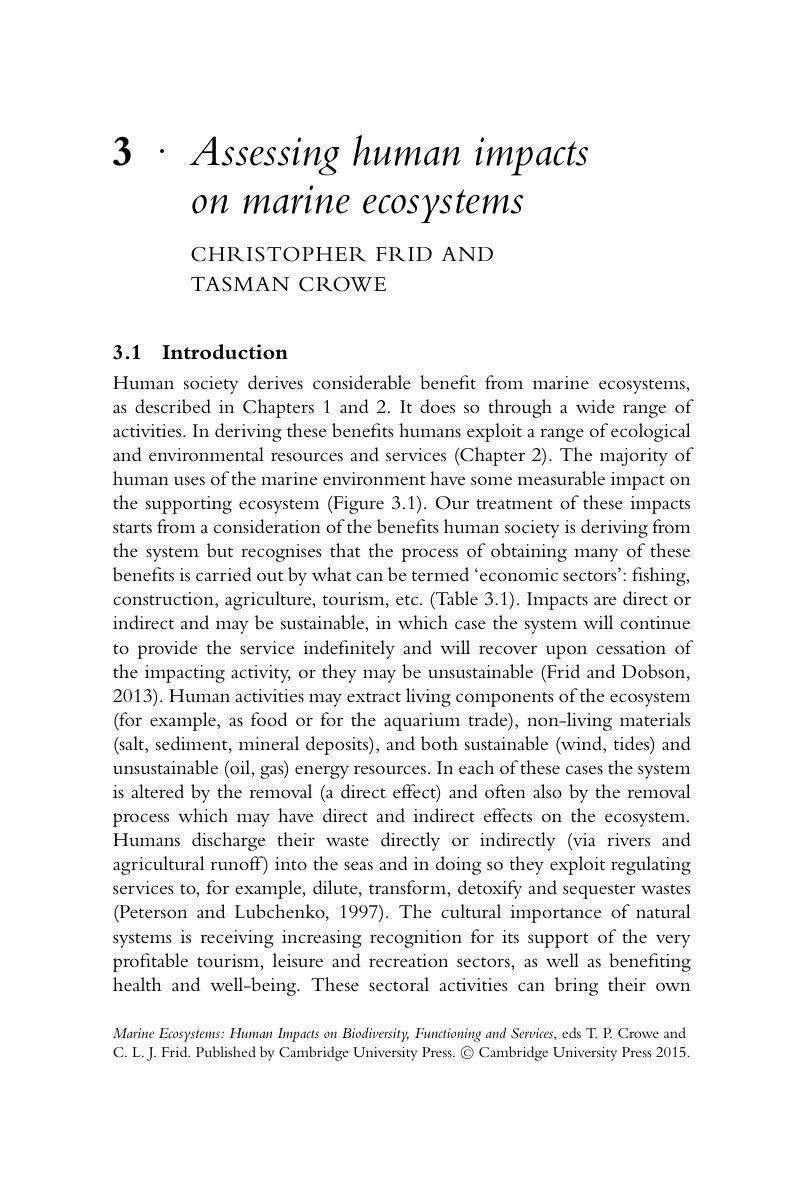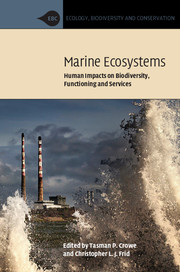Book contents
- Frontmatter
- Contents
- List of contributors
- Part I Key concepts
- 1 Introduction
- 2 Ecosystem services and benefits from marine ecosystems
- 3 Assessing human impacts on marine ecosystems
- 4 Modifiers of impacts on marine ecosystems: disturbance regimes, multiple stressors and receiving environments
- 5 Impacts of changing biodiversity on marine ecosystem functioning
- Part II Impacts of human activities and pressures
- Part III Synthesis and conclusions
- Index
- Plate Section
- References
3 - Assessing human impacts on marine ecosystems
from Part I - Key concepts
Published online by Cambridge University Press: 05 June 2015
- Frontmatter
- Contents
- List of contributors
- Part I Key concepts
- 1 Introduction
- 2 Ecosystem services and benefits from marine ecosystems
- 3 Assessing human impacts on marine ecosystems
- 4 Modifiers of impacts on marine ecosystems: disturbance regimes, multiple stressors and receiving environments
- 5 Impacts of changing biodiversity on marine ecosystem functioning
- Part II Impacts of human activities and pressures
- Part III Synthesis and conclusions
- Index
- Plate Section
- References
Summary

- Type
- Chapter
- Information
- Marine EcosystemsHuman Impacts on Biodiversity, Functioning and Services, pp. 42 - 72Publisher: Cambridge University PressPrint publication year: 2015



